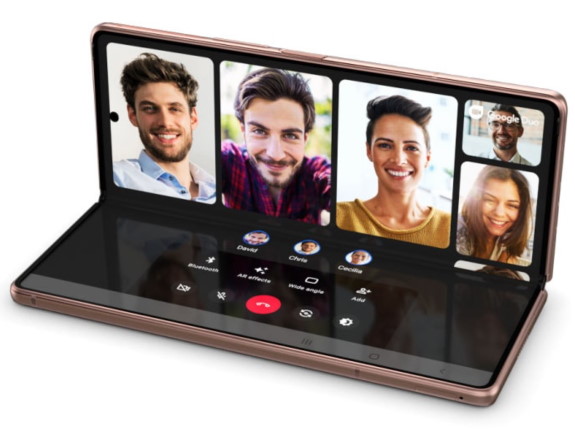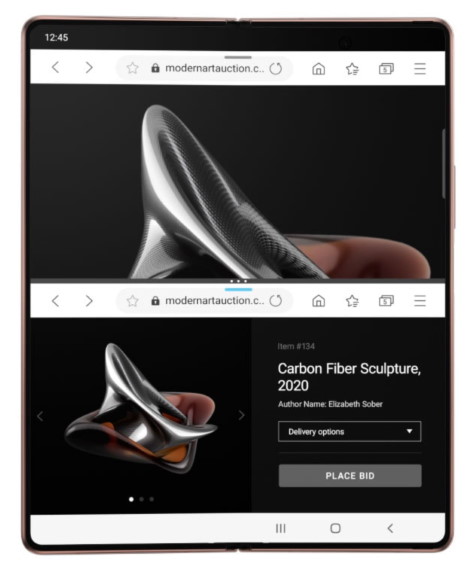We're going to try to remain cautious in our enthusiasm for the Galaxy Z Fold 2. In many ways its a remarkable phone, and it appears to be full of promise, but we haven't yet forgotten what happened the last time we got excited about a folding phone. That one also came from Samsung and was, in fact, the predecessor to this new handset. The company launched the first Galaxy Fold with great fanfare in April 2019 and expected consumers to be happy to pay two thousand dollars apiece for their innovative creation, but to say things didn't go well would be an understatement. Early units of the device that were sent out to reviewers had a nasty habit of breaking while being tested, and by the time the product became available commercially later that year, its reputation had already been destroyed. Samsung went back to the drawing board, learned its lessons, and has come back with something that looks far more robust.

While the new phone's dimensions are similar to those of the old phone, everything looks sleeker and sharper. When you fold it and sit it upright, it takes on the appearance of a tiny laptop - or, as other observers have pointed out, a slot machine cabinet. Perhaps that's intentional. We're well past the point where online slots have replaced physical slots as the most popular method of engaging in the habit. We're also well into an era where online slots are more likely to be played on mobile phones than on computers. We can easily imagine the companies who make online slots picking up this new device and optimizing their creations to appear on this display, with the lower half of the screen taking on the appearance of the lower half of an old cabinet. This device will doubtless be a game-changer for mobile phone gaming in general, but it's capable of far more than just running games.
Here's the technical information that those of you who base your decisions and assessments on specifications will want to know. The Samsung Galaxy Z Fold 2 comes with a 6.2-inch external screen and a 7.6-inch internal screen, both of which are dynamic OLED displays. The resolution of the internal screen is 2208 x 1768. The device runs on Android 10 when purchased, but will obviously update to newer versions as and when they become available. The main camera is 12 megapixels, and the front-facing camera is 10 megapixels. If you want to use it to shoot videos with, you can do so in 4K. Inside the phone's casing, you'll find a Snapdragon 865 Plus processor, 256GB of storage, and 12GB of RAM. The battery status is 4500 mAh and, pleasingly, doesn't seem to drain faster than the average iPhone battery despite the fact that it has two screens to support. Impressively, the screens have a 120Hz refresh rate, and the phone can be charged wirelessly. There's no headphone jack, but as the industry appears to be moving toward Bluetooth earphones as standard, that's not necessarily a surprise. Samsung has made the device 5G ready, so you should have no problem connecting to it when the service goes live in your area.
If you're tech-literate, you'll already have drawn your own conclusions from the spec, but this phone has good looks as well as great components. There's no detectable gap between the screen and the body whatsoever - you can't even get a fingernail beneath it. Apps move smoothly between the two screens without pausing or tearing. The interior screen doesn't have an irritating notch that gets in the way of whatever you're trying to look at. Everything looks sleek and modern, and this is exactly what a flagship phone leading us into a new era of hardware design should look like. We expect solid aesthetics from Samsung, but they've outdone themselves here. The criticism they received for the first Galaxy Fold - shortly followed by its commercial failure - obviously hurt them. They're determined to get it right this time around, and it looks to us like they've gone the extra mile to make sure that they do.

Not everything is perfect. Samsung's odd decision to locate the fingerprint reader on the side of the (very thin) phone makes it difficult to unlock your device successfully even when the phone is folded up. When it's folded open, and the surface contact area is even smaller, you'll be lucky to get a greater success rate than 50% when you're trying to open your phone this way. While competent, the cameras aren't the equivalent of the Note 20 Ultra, and there's no obvious reason why this should be the case. This new handset got the best of the available components elsewhere, so why not with the camera? You can't upgrade to 8K video, and optical zoom is only 2x. This isn't a phone that you'll want to buy if you're a keen photographer, but we suspect that isn't the reason most people will be interested in buying it.
Above all else, the price will still be a barrier for many people. Samsung has stuck with last year's pricing and slapped a two thousand dollar price tag on the Fold 2, and that's more than most people want to pay for a phone. You could get an excellent laptop for that price, and while phones might replace laptops one day, they haven't done so yet. Still, when we look back in a few years and try to identify the moment when laptops began to become obsolete, we might look at the launch of this exciting new handset as the beginning of the process.